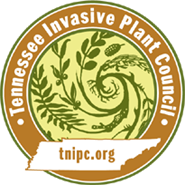Arthraxon hispidus (Thunb.) Makino
Arthraxon hispidus (Thunb.) MakinoHairy Jointgrass, Small Carpetgrass
| Threat Level | Category |
|---|---|
| Established | Grass |

Description
Height
Hairy Jointgrass is a low-growing, creeping annual grass with weakly ascending stems that can reach 1.5 feet (45 cm) in height.Stem
Stems are hollow, creeping/sprawling, rooting from lower nodes, mat- or turf-forming (sometimes) and round to polygonal in cross section. Stem nodes are swollen or brittle and bearded or hairy. Internodes are solid or spongy.Leaves
Leaves are 1- 3 inches (2.5-7.6 cm) long, 0.2-0.6 inches (0.5-1.5 cm) wide, and are ovate to ovate-lanceolate, with heart-shaped bases that clasp/encircle the stem. Leaf blades are mostly flat and have hairs along the margins.Flowers
Spikelets (individual flowers), which average about 1.5 inches (3.8 cm) long, are arranged in multiple spike-like racemes that generally appear from September to October.Fruit
Seeds are yellowish in color and average 1/6 inch (4 mm) long.Images
Photo: USDA PLANTS Database, Bugwood.orgMore images of Arthraxon hispidus
Life History
Hairy Jointgrass is a member of the Poaceae (Grass) family. It is an annual grass that can form dense stands that can overtake native species habitat. Hairy Jointgrass often occurs with Japanese Stiltgrass, which is another highly invasive annual.Habitat
Hairy Jointgrass readily invades sunny, moist, disturbed habitats such as fields, ditches, pastures, roads and trails, but can also invade native sites such as shaded upland woods, floodplain forests, streambanks and shorelines.Origin and Distribution
Hairy Jointgrass is native to Asia, but has been reported in 26 states in the eastern half of the United States as well as in Oregon and Hawaii. It is banned in CT and MA.Bibliography
Encyclopedia of Life. 2011. Arthraxon hispidus (Thunb.) Makino. http://www.eol.org/pages/1114774 (accessed 01 February, 2011).Gleason, H.A. and A. Cronquist. 1991. Manual of Vascular Plants of the Northeastern United States and Adjacent Canada: Second Edition. The New York Botanical Gardens. Bronx, NY. 910 pp.
USDA Forest Service. 2005. Weed of the week: jointhead grass. Forest Health Staff, Newtown Square, PA. 1 p.
USDA, NRCS. 2010. The Plant Database, PLANTS profile for Arthraxon hispidus (small carpgrass). National Plant Data Center, Baton Rouge, LA http://plants.usda.gov (accessed 01 February, 2011).
Management Recommendations
Mechanical Controls
Hairy Jointgrass can be hand-pulled or mowed before seed production. Mow plants as close to the ground as possible using a weed-eater or similar grass-cutting tool. Mowing treatments are most effective when made while plants are in flower and before seeds are produced. Treatments made earlier may result in plants producing new seed heads in the axils of lower leaves. Hand-pulled and mowed sites should be rechecked for growth of new plants as well and axilary seeding of cut plants.Herbicidal Controls
NOTE: Remember, Hairy Jointgrass often occurs in moist to wet sites. There are many strict local and federal laws that pertain to the use of herbicides for the control of weeds near water. Be sure to refer to manufacturer’s label for specific information and restrictions regarding use.Foliar Spray Method: Glyphosate -- Apply a 2% solution of glyphosate and water plus a non-ionic surfactant to thoroughly wet all foliage. Do not spray to the point of runoff. Ambient air temperature should be above 65°F to ensure translocation of the herbicide to the roots. Do not apply if rainfall is expected within two hours following application. NOTE: Glyphosate is a non-selective herbicide (i.e. it kills any green plant). Use extra caution to avoid getting chemical spray on any non-target species. Refer to manufacturer’s label for specific information and restrictions regarding use.
Sethoxydin -- Apply a 1.5% solution of sethoxydin and water plus a non-phytotoxic, vegetable-based oil to thoroughly wet all foliage. Do not spray to the point of runoff. Ambient air temperature should be above 65°F to ensure translocation of the herbicide to the roots. Do not apply if rainfall is expected within one hour following application.
